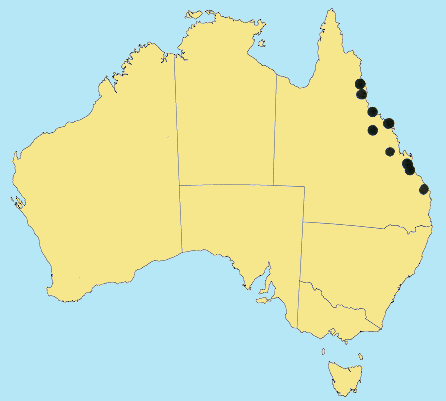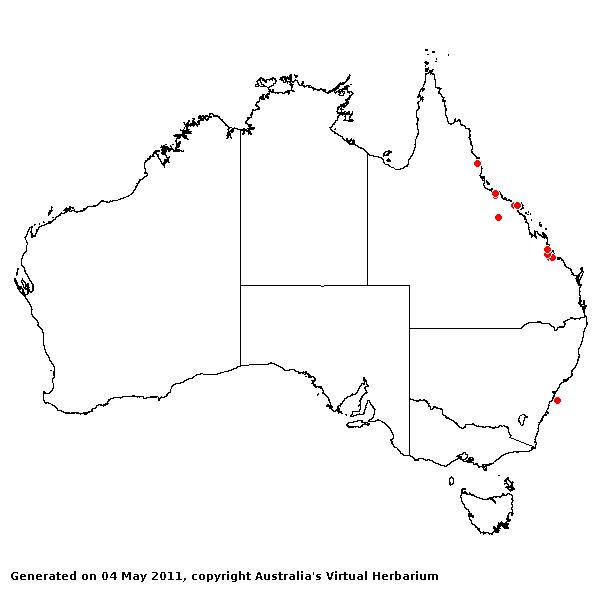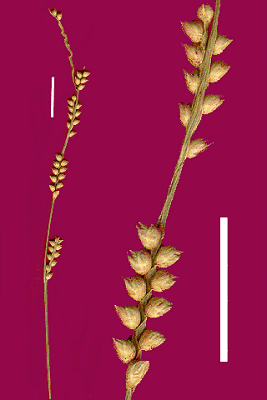Paspalidium flavidum (Retz.) A.Camus. Fl.
Indo-Chine 7: 419 (1922).
Classification. (GPWG 2001) : Subfamily Panicoideae. Paniceae.
Basionym and/or
Replacement Name: Panicum
flavidum Retz., Observ. Bot. 4: 15 (1786).
Type of Basionym or
Protologue Information: Sri Lanka:, König. s.n. (in Herb. Retzius)
(HT: LD).
Key references
(books and floras): [1810]. R.Brown, Prodromus (190 as Panicum
flavidum), [1878] G.Bentham, Flora Australiensis 7 (474 as Panicum
flavidum), [2002] D.Sharp & B.K.Simon, AusGrass, Grasses of
Australia.
Habit.
Perennial. Rhizomes present. Culms erect or geniculately ascending, 10–100 cm
tall, 3–5 -noded. Mid-culm internodes hollow. Mid-culm nodes glabrous. Lateral
branches sparsely branched. Ligule a fringed membrane or a fringe of hairs.
Leaf-blades 4–20 cm long, 4–8 mm wide. Leaf-blade surface smooth.
Inflorescence.
Inflorescence compound, a panicle of racemes. Racemes 4–9, appressed, 1–3 cm
long, 5–6 mm wide, bearing 5–8 fertile spikelets on each. Central inflorescence
axis 7–30 cm long.
Spikelets.
Spikelets sessile. Fertile spikelets 2-flowered, the lower floret barren
(rarely male), the upper fertile, comprising 1 basal sterile florets,
comprising 1 fertile floret(s), without rachilla extension, ovate, laterally
compressed or terete, 1.9–3 mm long.
Glumes.
Glumes similar, thinner than fertile lemma. Lower glume orbicular, membranous,
without keels, 3–5 -nerved. Lower glume surface glabrous. Lower glume apex
muticous or mucronate. Upper glume orbicular, 1.8–2 mm long, cartilaginous,
without keels, 5–7 -nerved. Florets. Basal sterile florets 1, male, with
palea. Lemma of lower sterile floret 100 % of length of spikelet,
cartilaginous, 5 -nerved.
Fertile lemma 1.8–3 mm
long, without keel. Lemma apex mucronate. Anthers 3.
Continental
Distribution: Africa, Temperate Asia, Tropical Asia, Australasia, and
Pacific.
Australian
Distribution: Queensland.
Queensland:
Cook, North Kennedy, Port Curtis.
Notes.
The presence of a well-developed palea of the lower floret and divergent
spikelets distinguishes it from P. jubiflorum. Paspalidium flavidum
is closely related to P. aversum and P. gausum.
Common in tropical
Asia. In tropical and subtropical rain forests and tropical and subtropical
sub-humid woodlands. Known from only a few collections in Australia. Flowers
Apr.-Sept.



